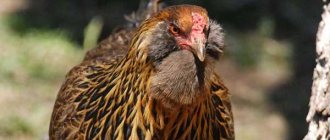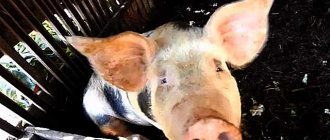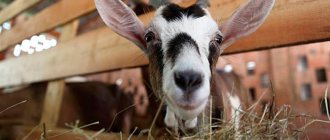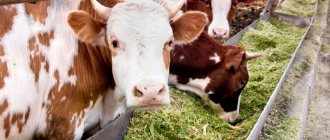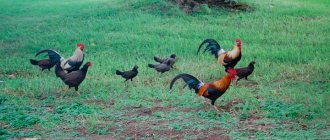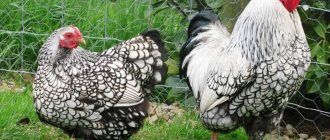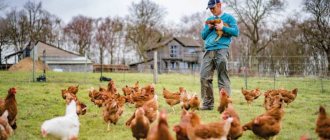2 582
no comments yet
4
Author:
Rasskazov Pavel.
Reading time: 1 minute
There is no scientific evidence that the presence of a rooster affects egg production. Therefore, it is believed that to obtain only eggs, a male in the herd is not necessary, and his absence completely eliminates the risk of obtaining fertilized eggs. If a farmer is interested not only in the egg component, but also in regularly producing young animals, a rooster in a chicken family is necessary.
Why do you need a rooster?
Before figuring out how many hens are needed for one rooster, it will be useful to say why it is needed at all.
There are several answers here. Firstly, it is the rooster that acts as the protector of the flock. Yes, yes, often when attacked by dangerous predatory rodents (rats, weasels and others), the rooster immediately rushes at the aggressor, and if he does not drive him away, then at least makes enough noise for the owners to react.
But another factor is much more important - fertilization. Essentially, every chicken egg is an egg. If it is not fertilized, then chicks will not hatch from it. In addition, an untrodden hen, knowing full well that its eggs are not fertilized and chicks cannot be produced from them, will not sit on the nest.
This is where the functions of the rooster end.
Keeping two or more cockerels together in a flock
Keeping 3 or more roosters together in one coop can lead to unforeseen situations. Constant competition, fights, and squabbles have a bad impact on the life of the entire bird community. It is worth limiting yourself to 2 male representatives.
The age of the rooster is of great importance for the hens. The young male practically does not pay attention to the females, and if there are 2 immature representatives in the flock, then no chicks are expected at first. The most profitable would be to keep 2 roosters, selected in such a way that one of them is young and the other is older.
Important! There can be 2 males in one chicken coop only if they grew up together, then they will be peaceful, get along quickly and will not conflict. The main thing is to choose the right breed, otherwise the crossing will not show good results.
Pros of giving up a rooster
Some experienced farmers, who know exactly how many hens to have per rooster, refuse to use a male at all. Why?
As mentioned above, the main purpose of a rooster is to fertilize eggs. Without it, it will not be possible to use them in an incubator or under a hen to produce young chicks. However, this is not always necessary. Some summer residents generally buy chickens in the spring, raise them in the summer, eating fresh homemade eggs, and in the winter, before leaving for the city, they feed them all for meat in order to buy another batch of chickens in the spring. That is, a rooster is completely unnecessary in such a household - at least to perform its main function. If you want to obtain eggs solely for consumption or for sale (and it is advisable to indicate that they are not fertilized), then you can do without a rooster. Contrary to the claims of some breeders, the taste of fertilized eggs is no better than that of unfertilized ones.
In addition, the rooster, in accordance with its function, tramples hens. Some do it very aggressively. As a result, the chickens walk around plucked, scratched and pecked. And such wounds may well get infected, which will lead to a long illness or even death of the birds.
A few more roosters locked in a small area could easily start a fight. And sometimes it ends with the death of one of them. Of course, this will cause unnecessary trouble for the breeder.
Finally, until the rooster tramples the hen, she will not want to sit on the nest, that is, hatch the chicks. Today, many people prefer to entrust this function to an incubator - in this case, the impact of various random factors is much less. The incubator will not think of throwing eggs away due to stress, he will definitely not trample them, and he will be able to hatch not 12-15 chickens, but much more. And in the three weeks saved, the chicken will be able to lay 10-20 eggs (depending on the breed), which will be an additional help in the household.
So, if you do not plan to use domestic eggs to hatch chickens, then having a rooster is not only not necessary, but also generally harmful.
How many hens should there be per rooster?
For chickens of egg-laying breeds, there should be no more than 15 heads per producer, general breeds - no more than 12, fighting, heavy meat breeds and small breeds - no more than 8 heads. If exceeded, the required complete fertilization of eggs may not be achieved.
You should not keep a large number of males in a flock. Constant competition leads to violent fights between birds. Frequent mating can also injure hens.
The age of the rooster is very important. Young males may not immediately begin to show attention to females. It is recommended to keep two males in the herd: a young and an adult.
Roosters are necessary for those farmers who breed poultry and are interested in the number of chickens. Eggs without the participation of a rooster will not be fertilized. They won't hatch chicks. If there are no roosters in the herd, then the females practically do not show the instinct to hatch eggs, although they will lay eggs regularly.
How to distinguish a hen from a rooster?
Cockerels have a small sexual growth in the area of the cloaca. Chickens don't have it.
The method that our grandfathers used is to turn the chicken upside down, carefully holding it by the legs. The hen will remain calmly hanging upside down, and the cockerel will try to look around and make an attempt to restore balance by pulling his head to the level of his stomach.
How does a rooster impregnate a hen?
In males, the genital organs are a pair of yellowish-white testes with thin spermatic ducts that empty into the cloaca. The female genital organs are a grape-shaped ovary and an oviduct, which also flows into the cloaca.
The process occurs when special openings (cloacae) are briefly in contact, used by males and females to remove waste products.
In each group of the chicken family there is a leader - the largest and strongest male. At the slightest attempt at primacy in the pack, fierce fights occur between competitors, leading to blood. The leader has the right to mate with any female at any time.
Flirting, the rooster walks around the hen and scratches the lowered wing with his foot. He always shares his prey with the female he likes and generally shows her all kinds of attentions provided for by bird love etiquette.
During the molting period the situation changes. The chickens are left to their own devices. The male hits and drives the females away from the “table”. As soon as the molting stops, peace returns to the large chicken family.
The chicken has a hole on its back, and the rooster tries to find it by moving his paws. People say “the rooster tramples the hen.” In general, sexual intercourse among chickens is a harsh spectacle and absolutely devoid of erotic elements. During mating, the rooster is on top and holds his girlfriend by the back of her head with his beak.
Mating in birds is a short-term and often repeated process. With abnormally increased sexual activity of roosters (up to 22 matings per day), the amount of seminal fluid and its concentration in males decreases by 2 times. Limiting the number of copulations, on the contrary, increases the percentage of egg fertilization and the viability of chickens.
During the process of fertilization, the male hen's cloaca is everted, and the gonads begin to secrete seminal fluid. Upon contact with the female's cloaca, the seed enters her genitals, where it remains active for up to 20 days. All eggs laid during this period will be fully fertilized.
Every day, an egg is formed in a chicken's ovary, which is an ovum. Through the oviduct, it enters the female's cloaca, where it meets the male's seed. Fertilization occurs through the soft shell of the egg. After a day, the shell hardens, turning into a shell, and the egg is hatched.
When a sperm comes into contact with an egg, an acrosomal reaction occurs. A filament is released from the acrosome of the sperm, which penetrates the receptive mound of the egg. The yolk membrane of chicken eggs is dissolved by sperm lysines, otherwise called gamones. Only the head, the connecting section and the neck of the sperm penetrate into the egg. The tail comes off.
What does a fertilized egg look like?
During fertilization in birds, many sperm enter the egg at the same time (polyspermy). From 20 to 60 viable sperm penetrate a chicken egg. Only one sperm fuses with the egg.
Remaining in the oviduct, sperm that did not participate in fertilization remain active for up to 3 weeks, and can fertilize eggs during subsequent ovulations.
By placing an egg in front of a bright light source, you can determine whether it is fertilized. If a dark spot (embryo) is clearly visible in the light, then chicks can be expected soon. If the embryo is missing, such eggs can be safely used for food. It is recommended to use an ovoscope to examine eggs.
Optimal ratio for meat breeds
Let's say that you have definitely decided: fertilized eggs are needed. This means that there is no way to do without the head of the chicken harem. Here the question arises: how many hens per rooster is the optimal indicator? It is difficult to give a definite answer here. It depends on various factors, one of the main ones being the breed.
The fact is that meat breeds are distinguished by greater weight and, accordingly, less mobility. Consequently, roosters are less active here. Therefore, the ratio here must be certain. How many chickens are needed for fertilization per one meat breed rooster? No more than 15-20 individuals. The rooster will not have time to trample a larger number of birds, which is why some of the eggs will remain unfertilized and it will be impossible to hatch chicks from them.
Introduction
When you only need eggs
Chickens will gain weight and lay eggs well if you create comfortable conditions for them. Namely, organize lighting, ventilation, high-quality food, and nesting sites. If necessary, heating and walking.
Hence the conclusion: a rooster is not needed to regularly produce eggs. It does not affect the number of eggs laid. Continuing the topic, we recommend that you read the article “Can hens lay eggs without a rooster?”
Needed or not
Before purchasing a male, you first need to decide what exactly he is needed for. The rooster is the fertilizer. And if you plan to breed chickens, then you can’t do without it.
In addition to this, the male will ensure order in the pack. Determines the daily routine. And will provide protection to chickens and offspring.
It has been noticed that when chickens live without a leader, over time their maternal instinct disappears. They stop hatching eggs. They have a more chaotic day. Strong females appear in the flock. They humiliate the weak, depriving them of privileges: food, a soft place on the bedding.
Best ratio for egg-laying hens
But when breeding egg-bearing breeds, breeders did not at all strive to create large birds that provide a lot of meat. The goal here was to maximize the number of eggs the chickens would produce in a year. Therefore, roosters are smaller, lighter and more agile. In this case, one rooster is enough for a flock of 20-25 hens. At the same time, he will probably have time to fertilize each of them, and the owner will receive high-quality eggs, any of which can be placed in the incubator to get a cute yellow chicken after 21 days.
Important Function and Other Features
About egg fertilization
For the eggs to be fertilized, the rooster must come into contact with the genitals of the hen's cloaca.
It should be noted that with high libido in a male, the quality of the seminal fluid decreases. In this case, not every egg will be fertilized.
And vice versa - with a small number of matings per day, the concentration of semen in the rooster increases. Find out more in the article How Roosters Impregnate Hens.
Much depends on how old the male is.
Age
Puberty of males occurs at 4-6 months. There is an opinion that after two years of activity the old rooster should be replaced with a young and healthy one.
Roosters intended to improve the qualities of the breed are carefully selected. They must come from the best layers of the flock.
Moreover, in order for chickens to produce high-quality offspring, it is recommended to take the cockerel from another herd. So that he is not related to females.
One rooster can be kept in the herd for a maximum of 3 years. Further maintenance is unprofitable. The male continues to eat as he ate. But the quality of fertilization drops sharply. And he's not gaining weight.
Choosing the best yard owner
However, it is not enough to know how many roosters there should be for hens. You also need to choose the most suitable one.
Of course, it is best to have several candidates for this. This usually happens in households. The chickens hatched in the spring (using an incubator or a live hen) grow up, and it becomes clearly clear which of them is a hen and which is a rooster. They are not yet allowed near adult birds - being inferior in size and strength, they may well become an object of aggression, and they will always lack food. But the character is already clearly visible. Some behave openly aggressively - for no apparent reason they rush at other cockerels and hens. Others, on the contrary, are very passive - they prefer to spend time away from the flock, huddle in a corner, not showing much agility even when feeding. Of course, neither the first nor the second are suitable for the role of head of a chicken family. But some individuals are completely different. They walk proudly, always show activity during feeding, do not get involved in fights themselves, but they can stand up for themselves - their cocky relatives literally fly away from them, and behave very quietly and calmly in their presence. This is the best candidate, which is definitely worth keeping for breeding. Not only will he take care of the flock, but he will also pass on good genes to the chickens.
What to do if roosters fight
Unfortunately, sometimes gardeners are faced with the problem of bird aggression towards each other. Having learned how many chickens need one rooster, novice poultry farmers start a decent flock of chickens of several dozen individuals and leave several males in it. That's why they start fights. What to do?
Unfortunately, there is no truly reliable solution here. For wild nature, this is quite natural - stronger males expel weaker ones, and the latter simply leave the territory of others. This is simply not possible in a chicken coop or even a small walking area. The rooster will not be able to fertilize all the hens himself, but will try to keep competitors away from them. The only reliable way is to divide the area into several zones, in each of which one rooster will live with his own small harem. Yes, it's a little troublesome. But the problem is definitely solved.
Life of a male in a pack
Advantages
Let's take a closer look at why you need a rooster in the chicken coop.
First of all, the male regulates the life of the inhabitants of the poultry house by the clock. The chickens, under his leadership, wake up and go to bed at the same time. They eat. They go out for walks.
As a strong man, the rooster feels that he is obliged to protect the hens from internal squabbles. And external irritants that threaten the health and life of females. These could be predators.
Or a farmer who daily renews food in the feeders and water in the drinking bowls. Sometimes this takes about an hour. Because the male does not allow him to approach the containers and hens.
Negative points
On the other hand, keeping a rooster in a chicken flock also has disadvantages. The main one is aggressive behavior. Especially if there is more than one male in the territory.
There is always a risk of physical injury to the farmer keeping the livestock. And also for children who come close to the enclosure. Or they will go directly into the chicken coop.
How to deal with this is described in the article “The rooster pecks and attacks: what to do and how to wean it off.”
Other cons
Often, conscientious laying hens are looking for a place to hatch their eggs. But not everyone manages to do this in peace. The leader of the herd was not used to anyone sitting idle. And he looks at hens exactly like that. Therefore, he begins to chase them throughout the chicken coop. Many farmers move the males to another premises after the eggs are fertilized.
Roosters often spoil the appearance of hens. During the mating process, they injure the females. They tear out feathers and scratch. And they even hit you with their beaks. Chickens become stressed due to this treatment. And if the wounds get infected, infection cannot be ruled out.
Looking for a new rooster
Knowing how many hens are needed for one rooster, it is advisable to figure out how to select a suitable candidate. The main criteria are described above. But still, it is undesirable to select a cockerel for several years in a row from the offspring produced by your own farm. This leads to inbreeding (simply inbreeding), due to which subsequent offspring will be weaker - the number of diseases will increase, the individuals themselves will be smaller, and egg production will decrease.
Therefore, it is advisable to take a new rooster from another farm, one with which your chickens have not been bred before. Of course, you need to choose a male of the same breed in which you specialize - crossing will not lead to anything good.
By taking a healthy, strong and robust rooster, you can fertilize an entire flock with just one male and get rid of inbreeding, ensuring many years of good egg production and the absence of serious diseases. This is much easier than replacing an entire flock of dozens of chickens.


